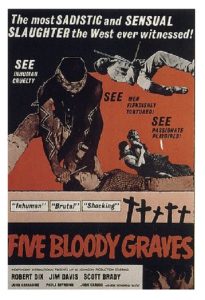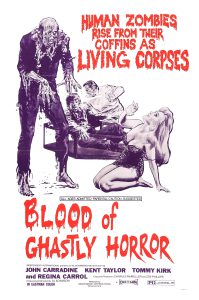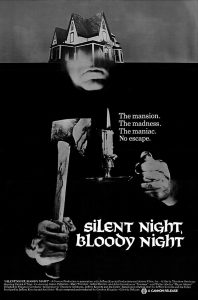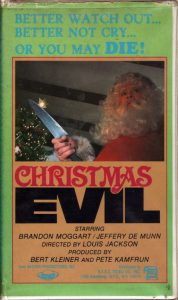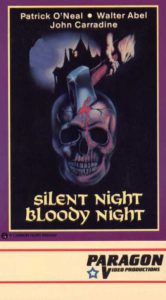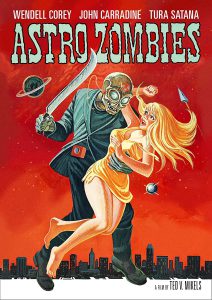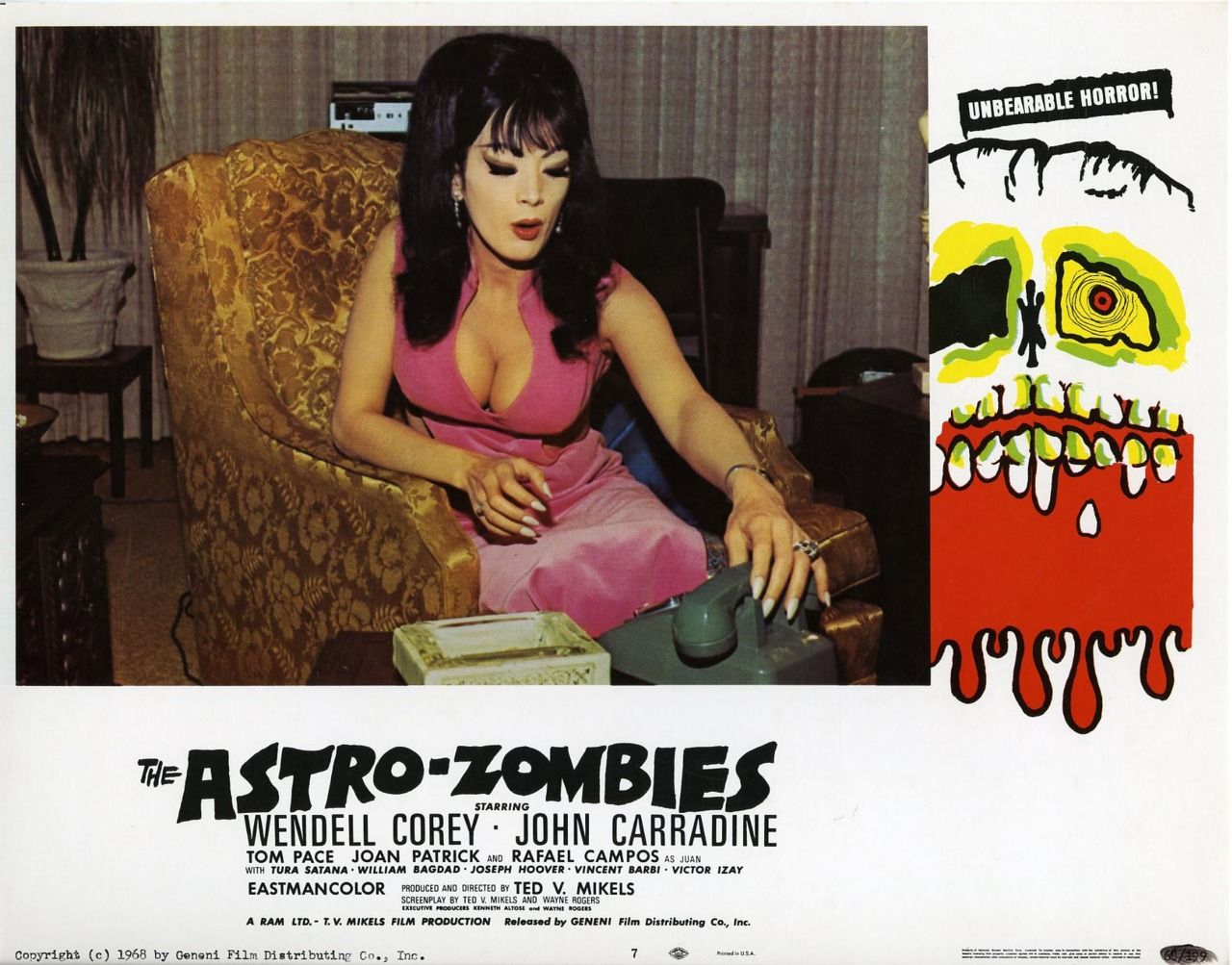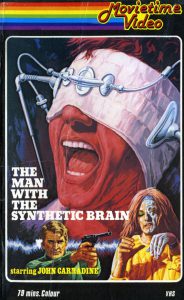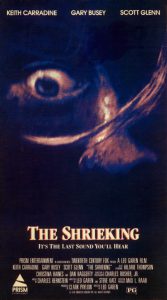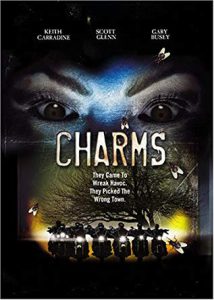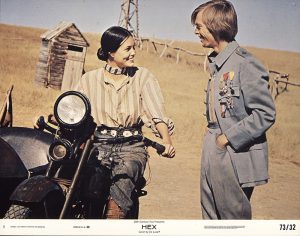I have a few friends who share my taste in movies. And every once in a while I get together with one of them and watch a movie. Or two. Or three or four. I have an annual all day movie marathon with my friend Brian every December. Because of his crazy work schedule, it is often our only chance to do something like that. I have another friend with whom I used to watch movies more often. Two, or three, or maybe four times a year we would get together and have a “bad movie night.”
I’m sure I’ve talked about this before, but just in case someone reads this someday and gets all bent out of shape… We call it a “bad movie night” but this doesn’t mean that all of the movies we watch are “bad”. We usually watch movies that we’ve never seen before, so we can’t be sure where they will fall on the spectrum of Truly Bad to So Bad It’s Good to Actually Quite Good (and everything in between).
My friend took a job way up north for a few years, which meant that we would not be able to see each other as often. As a result, whenever he was in town (which was often unexpected, and for work purposes), he would call me up and say something like “hey, I’m in town tonight – let’s watch some movies.” And because this might be our only chance for months, I would cancel all other plans and host a bad movie night.
The funny thing is, he started to call me more and more often. “Hey, I’m back in town… Could be the last time this year… ” So, I continued to drop everything and invite him over the watch movies. At one point, he called me three weeks in a row.
“You’re back again?”
“Yeah, work is crazy.”
This was getting ridiculous. I was now seeing my friend more often than when he lived in the city. And more than than my OTHER friends who lived in the city. I enjoyed watching movies with him, but how could I justify cancelling all other plans whenever he called?
The punch line of the story is that he moved back to the city and now I don’t see him as often.
But back in the heady days of frequent bad movie nights, my friend picked up a VHS tape from a Movie Village shelf and said “What about this one?”
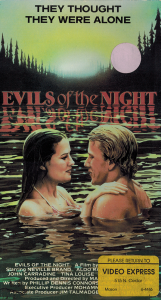 I looked at the cover art for Evils Of The Night (1985) for the first time. It looked like a typical slasher film to me. And I love slasher films, so I was pretty much sold without knowing anything else.
I looked at the cover art for Evils Of The Night (1985) for the first time. It looked like a typical slasher film to me. And I love slasher films, so I was pretty much sold without knowing anything else.
“I could use a John Carradine fix,” my friend said.
“Huh?” I was still mesmerized by the thoughts of typical slasher movie action, and didn’t know what my friend was talking about.
“John Carradine is in this movie, and I could use a John Carradine fix,” he explained.
“Oh…”
John Carradine was in this movie? I took a closer look at the box and saw names like John Carradine, Julie Newmar, Neville Brand, Tina Louise and Aldo Ray. This wasn’t like the cast of any slasher movie I’d ever seen.
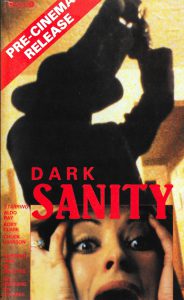 Aldo Ray? I think the first time I saw that name was on the front of a VHS box I rented called Dark Sanity (1982). Notice it is the exciting “pre-cinema” release of the movie. This was before “direct-to-video” was a thing, so I guess they were trying to find a way to make “too-crappy-for cinemas” sound good. The first name listed was Aldo Ray, and because the box featured a woman (and talked about a woman on the back), I actually wondered if the lead actress was Aldo Ray. I should have known better, because I was aware of Canadian rocker Aldo Nova (and I loved his song “Fantasy”). Perhaps I thought the name Aldo was a bit like Jamie, or Kim, and could be either male or female.
Aldo Ray? I think the first time I saw that name was on the front of a VHS box I rented called Dark Sanity (1982). Notice it is the exciting “pre-cinema” release of the movie. This was before “direct-to-video” was a thing, so I guess they were trying to find a way to make “too-crappy-for cinemas” sound good. The first name listed was Aldo Ray, and because the box featured a woman (and talked about a woman on the back), I actually wondered if the lead actress was Aldo Ray. I should have known better, because I was aware of Canadian rocker Aldo Nova (and I loved his song “Fantasy”). Perhaps I thought the name Aldo was a bit like Jamie, or Kim, and could be either male or female.
I eventually figured out that Aldo Ray had to be the older man in the movie, and I asked my Dad if he knew who Aldo Ray was.
“He was a Hollywood star very briefly,” my Dad told me. “I think he had a drinking problem and faded away pretty quickly.”
I’m not sure how accurate my Dad’s summation was, but it certainly could fit the career path of several Hollywood actors. I started to notice Aldo Ray’s name popping up on a lot of low budget 1970s and ’80s movies, like Hollywood Cop (1987) and Haunts (1976). Oddly enough, I thought Haunts might be the same movie as Dark Sanity for a few years. I had already accidentally seen Dark Sanity twice, because I rented it under the title Straight Jacket, so when I saw the box for Haunts with a woman and Aldo Ray’s name on the cover, I got suspicious. It is, of course, a completely different movie, but it took me years to find out.
I eventually saw Aldo Ray in some major Hollywood classics like Miss Sadie Thompson (1953) and Pat and Mike (1952), and it was hard to accept that this was same guy who I got to know in Not Quite Classics such as The Centerfold Girls (1974). Interestingly, both of those 1950s films feature Charles Bronson in a supporting role. He was beginning his slow journey to superstardom while Ray was, perhaps, beginning a long descent that would lead him to…
Evils Of The Night (1985), which is not a typical slasher film as I had originally thought. It’s more of a weird SciFi vampire movie, which could also qualify as a sexploitation film in some ways. There is a lot of (high quality) nudity in the film, as well as some pretty explicit sex scenes (featuring actual adult film stars like Amber Lynn and Crystal Breeze). The old Hollywood stars, like Julie Newmar (most famous as The Catwoman on the original Batman TV series) and John Carradine, play aliens who are experimenting on human teenagers. Aldo Ray and Neville Brand (known to horror fans for unforgettable his turn as Judd in Eaten Alive (1976), but also in classics like D.O.A. (1949) and Stalag 17 (1953)) are the human gas station attendants who help procure victims for the aliens.
In case you haven’t figured it out, Evils Of The Night is a very strange little movie. But it is strangely entertaining, and, as my friend summed it up at a “bad movie night” all those years ago, it really delivers the goods. If you have a taste for #NotQuiteClassicCinema that’s high on sleaze and low on sensibility, then look no further for a perfect addition to your next #FridayNightAtTheHomeDriveIn.
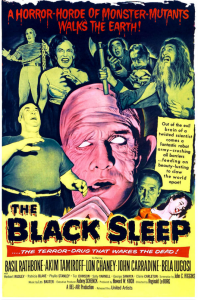 The Black Sleep (1956) by #ReginaldLeBorg
The Black Sleep (1956) by #ReginaldLeBorg

